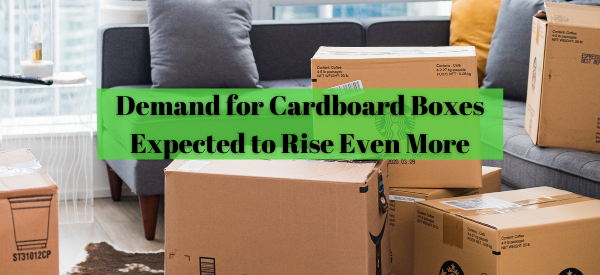The reliable cardboard box, once viewed merely as a simple container, has transformed into a pivotal topic of discussion in boardrooms across the UK! Alongside previous adjustments, a modest price increase of 3% in August 2024 is putting many businesses under pressure. These changes stem from rising raw material costs, supply chain challenges, and growing demand impacting our industry.
But here's the exciting news: for driven entrepreneurs and savvy supply chain leaders, there's no reason to fret! This guide will equip you with practical strategies to navigate rising cardboard costs while keeping your sustainability goals in sight. Let's embark on this journey together and uncover the promising opportunities that await us!
The Corrugated Conundrum: Navigating the Market Landscape
As we embark on identifying cost reductions and optimizing our cardboard usage, it's crucial to delve into the key factors shaping the current challenges in the packaging industry. The cardboard market is facing a unique set of hurdles that we can address together:
- Raw Material Shortages: We’re currently experiencing challenges in securing raw materials, particularly timber, which is impacting supply.
- Rising Energy Costs: The costs linked to powering our manufacturing processes have significantly increased, affecting our overall production expenses.
- Strong Demand: There’s a robust consumer preference for reliable cardboard boxes in the UK that are both durable and cost-effective.
These factors have resulted in price increases of 6% to 17%, a challenge that requires our collective attention and strategic thinking. Despite the pressure on costs, let’s focus on creative and sustainable approaches to manage and contain our packaging expenses. By working together, we can navigate these challenges effectively and make informed decisions that keep our costs in check while meeting consumer expectations. Together, we can transform these obstacles into opportunities for growth and innovation in our packaging strategies!

Cost-Saving Strategies: Think Creatively!
1. Optimize Your Packaging Design
Have you ever received a small item in a big box? Let’s avoid that! It’s important to use the right-size packages. By choosing box sizes that match your products, you can lower material costs and cut shipping expenses. This is a win-win that would impress Marie Kondo!
Consider using design software to adjust your box sizes. It’s like playing Tetris, but with real savings! By taking these steps, you can improve efficiency and show your commitment to thoughtful and sustainable practices. Let’s make a positive change together!
2. Use Sustainable Options
You can save money and help the planet at the same time. By choosing recycled cardboard or biodegradable packaging materials, you reduce your environmental impact and save on costs.
Pro tip: Look into reusable boxes for internal logistics or customer returns. It's like having a loyalty program for your packaging.

3. The Second-Hand Box Market: It's a Thing
Before dismissing the idea of using second-hand boxes, consider this: sourcing used or surplus boxes can be much more cost-effective than purchasing new ones. It's similar to thrift shopping, but for your supply chain.
Just ensure the boxes are still in good condition. You want to save money, not send your products in boxes that look like they were found behind a local supermarket.
4. Negotiate as If Your Budget Depends on It (Because It Does)
Channel your inner dealmaker and take charge when negotiating with your suppliers. Long-term contracts are essential for stabilizing costs, and they can secure you better rates. Think of it as locking in a fixed mortgage rate, but for cardboard.
Don’t make the mistake of putting all your eggs (or boxes) in one basket. Diversify your supplier base to effectively compare prices and services. Healthy competition is crucial – it keeps everyone sharp, even if it squeezes your current supplier’s profit margins.
5. Automation: Embracing Effortless Efficiency
Investing in automation for your packaging may seem like an unexpected choice while cutting costs, but it’s truly a game-changer! By streamlining repetitive tasks, you’ll not only slash labor expenses but also boost efficiency over time. Plus, think about it—robots tirelessly work without the need for breaks or benefits. It’s a win-win!
Balancing Act: Sustainability in a High-Cost Market
You might be wondering, "While cost-cutting is important, what about our sustainability goals? We can’t just start wrapping everything in plastic and calling it a day!"
Don’t worry, eco-warriors! Here’s how to maintain your commitment to sustainability while also saving some money:
- Choose Materials Wisely: Select recyclable or biodegradable options. Mother Nature will appreciate it, and so will your customers.
- Transparency is Key: Ensure your suppliers follow sustainable practices and ethical sourcing. This approach benefits the planet and enhances your public image.
- Educate Your Customers: Inform them about your efforts to balance costs and sustainability. They may be more understanding of any necessary price adjustments.
- Innovate: Encourage your team to come up with creative, sustainable packaging solutions. You might just lead the industry in innovation!
By focusing on these strategies, you can uphold your sustainability goals while navigating a high-cost market.
Closing Thoughts on Cost-Effective, Sustainable Packaging
Facing the challenges of rising cardboard box prices doesn’t mean you have to compromise on your commitment to sustainability or your profits. By reimagining your packaging design, exploring eco-friendly packaging, and launching efficient cost-saving methods, you can turn this situation into an opportunity for growth and resilience.
Keep in mind, the best box is one that avoids the landfill. Whether you choose to size down, reuse materials, or rethink your entire packaging strategy, let that guiding principle inspire you.
It’s not just about thinking outside the box, but transforming the box itself. Embracing these challenges can spark exciting innovations that truly set your business apart.
So, to all UK businesses, let’s tackle the rising cardboard costs together. Your financial success—and our planet—will thrive as a result!






